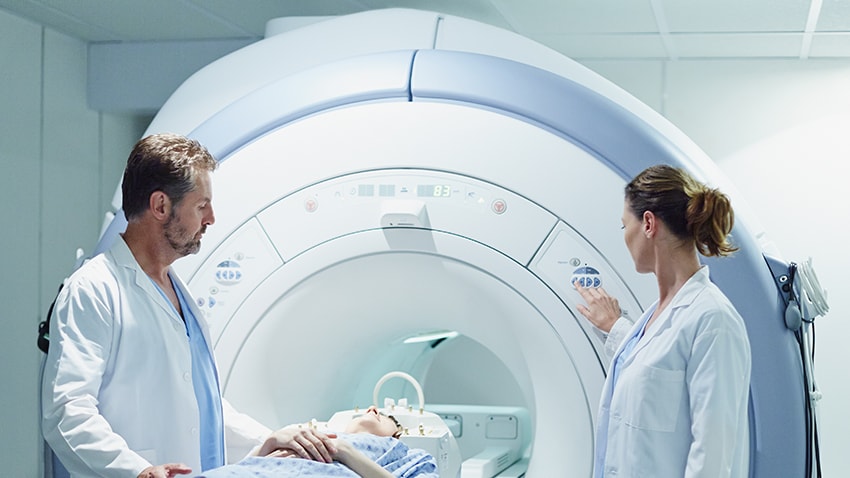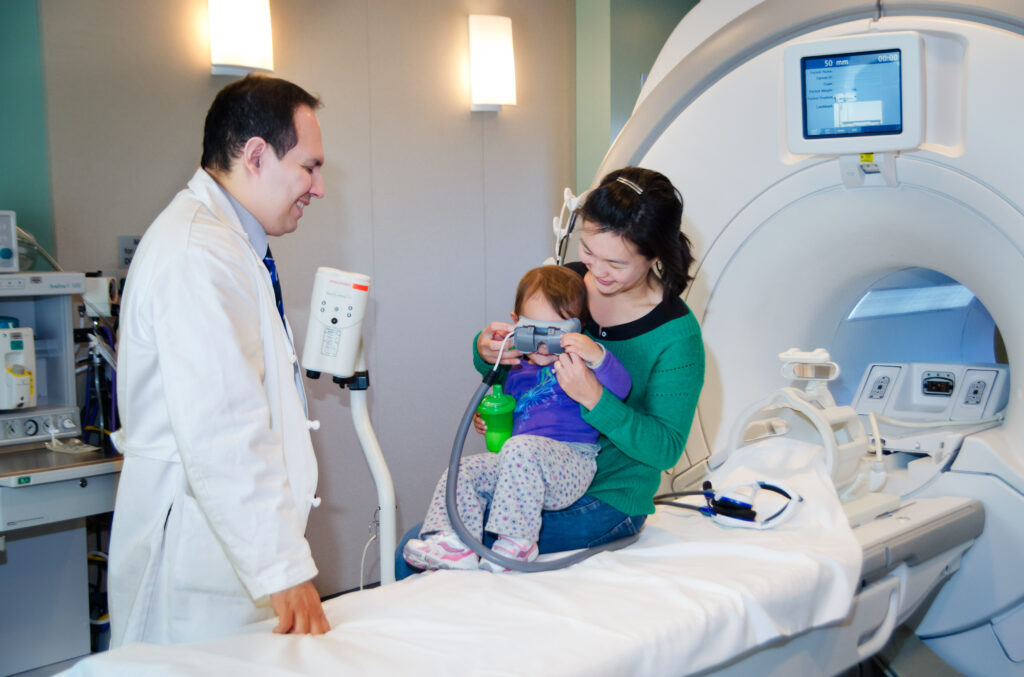Before we go any further with how MRI and Virtual Reality are related and how to research and developments are being done. Let us understand what is MRI, in summary, to help us understand the deeper concepts a bit better.
Developed by Twin Reality
MRI is a short form for Magnetic Resonance Imaging, a method using which internal organs are imaged via strong magnetic fields and radio waves. This is useful detect clots, blockages or other forms of disturbances or deformations in the human body. An MRI scan shows a detailed and color report about body organs in the picture and according to which further medical procedures or surgeries are carried out.

Now comes the role of technology or in our words the role of Virtual Reality and Augmented Reality in it. The MRI scan is carried out in a closed room with the help of a radiographer who moves you in and out of the MRI scan machine. For claustrophobic people, it may seem very daunting. So, for patients like these, the Virtual Reality headsets are given using which their minds are diverted into a different path for the scan to be carried out seamlessly.
A lot of research has gone into understanding patient anxiety during MRI scans and the neuroscience behind it. Before VR was introduced, medicos used the processes of seduction or anesthesia, however, there are chances that they might not fully work. After the introduction of VR, it’s a more relaxing experience for the patient.
The second role after MRI claustrophobia is MRI patient preparation. As far as patient preparation is concerned, the VR/AR research teams over the world have developed various software’s and apps, using which patients are educated about the MRI experience and machine scanning.
In this, the virtual reality headset is connected to a standard MRI head coil, that is enabled by two MRI-compatible cameras, which is controlled by the patient’s eye movements. This is done for those patients who fear the MRI room and after making them wear this headset, they are taken into the MRI room for scans. The audio and visuals are present during the actual scan are simulated and that somewhat helps patients to gain confidence and lower the fear rate.

Another interesting study to take reference from is a case study performed somewhere in the United Kingdom. A group of a total of 35 participants, of which around 6 were children were called test participants to see how this technique works. They were given these headsets with games, apps and another relaxing topic already installed into them. When they were put into an MRI scanner, they never got to know about being scanned by an MRI machine and could easily perform their favourite tasks from the VR headset. Also, they did not have any side effects like motion sickness, headache or loss of focus from the headset.
The third aspect of the patient experience from MRI is VR apps in medication. The patients also learn about potential conditions or diseases for which the scan is being done. They see the damaged body part or the organ in a more holistic and 3-dimensional manner and show solutions about that organ or part that will be cured by medication or surgery. This not only helps patients but also doctors to plan their flow of treatment better.
So, as far as to date, it is safe to say that a lot of research is being undertaken to enhance the patient experience in MRI scanning, and there have been some successes in between too. However, it is still in its infant stages and much more capital investment, time and research equipment’s will be needed to make it more accurate.
At Twin Reality, we do just that. We are one of the pioneers in building Augmented Reality and Virtual Reality app development in India, and have a wide range of experiences from education to exhibitions, medical to entertainment and even real estate. To see our projects, clients and work, feel free to reach out through our website!


